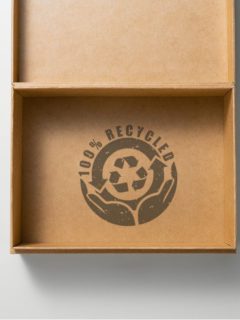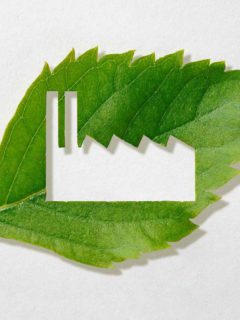Plastic is a great ally for the hygiene and preservation of your food products. Nevertheless, it is necessary to choose your plastic food packaging carefully to take advantage of it and to be in compliance with the legislation in force. This material can be compatible with eco-responsible packaging, such as bio-based plastics. Alternatives to plastic are also possible, such as packaging made from food grade cardboard.
How to choose? What elements should you pay attention to? Here are 5 questions to ask yourself when choosing your plastic food packaging.
1. What does the legislation say about plastic packaging?
The use of plastic packaging in the EU is regulated by various European and French laws. Single-use plastic is particularly targeted by these laws, because of the pollution generated.
European directives
The European Directive 94/62/EC of 20 December 1994 on packaging and packaging waste significantly changed the legislation on plastic packaging. In particular, it has made it possible to harmonise the various measures taken in each European Union country. In particular, this directive is in favour of all forms of waste recovery, such as recycling or reusing packaging.
Similarly, the Directive (EU) 2019/904 of the European Parliament and of the Council of 5 June 2019 on the reduction of the environmental impact of certain plastic products has prohibited the availability of certain plastic products.
French legislation
When it comes to plastic packaging, France has taken numerous measures in recent years. Among the laws governing plastic packaging are:
- The Law No. 2020-105 of 10 February 2020 on the fight against waste and the circular economy: since 1 January 2022, fruit and vegetables can no longer be sold in plastic packaging. It also aims to exit disposable plastic with a target of 100% recycling by 2025. The law also aspires to establish a required minimum recycled plastic content in packaging.
- The Law No. 2018-938 (EGAlim) of 30 October 2018: by 2025, plastic food containers will be banned in collective catering in local authorities.
2. What are the benefits of plastic food packaging?
Plastic is one of the most widely used materials in the food sector. Indeed, it offers multiple advantages in terms of conservation, as well as the enhancement of foodstuffs.
A plastic food package is designed to protect food from the outside elements. It extends their shelf life by protecting them from moisture, light, or even bacteria. In the food sector, plastics used for packaging are also chosen for their suitability for contact with food. This means that they offer optimum preservation of foodstuffs without any health risks.
Plastic is a resistant material: it thus makes it possible to protect food during transport or the various handling operations prior to marketing. Finally, plastic food packaging is valuing for the food. Often transparent, it allows customers to see the capacity.

3. Can plastic food packaging be environmentally friendly?
Plastic has evolved greatly. Indeed, this material can be recyclable, as is the case with PET (polyethylene terephthalate) and PE-HD (high density polyethylene). When recycled, PET gives rise to rPET. This gives the packaging a second life.
There are also biobased plastics designed from renewable materials. They can be made from corn or potato starch, sugar cane, or other plant sources.
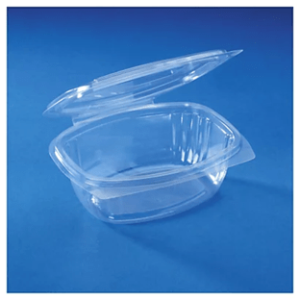 |
Our Raja clear food boxes are made from corn starch (PLA) and are compostable. |
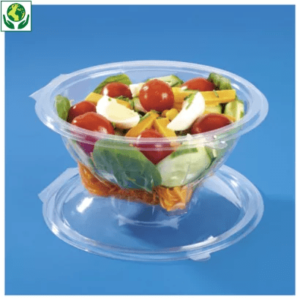 |
The Raja round plastic baskets are recyclable thanks to a PET plastic construction. |
4. Are there alternatives to food plastic packaging?
Food carton packaging is an alternative to food plastic packaging. By choosing materials that are recyclable, made from recycled materials, compostable, or reusable, you are part of an eco-responsible strategy.
Food packaging offers optimal protection of foodstuffs, but also food safety. The different formats available allow you to meet your packaging needs. Cups, pizza boxes or even cardboard salad bowls, the alternatives to plastic packaging are numerous.
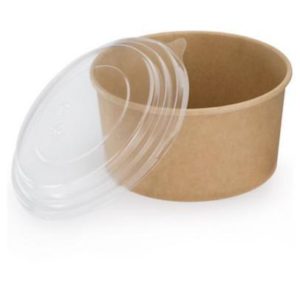 |
The Raja recyclable round cardboard tray is an excellent alternative for presenting and marketing food thanks to a transparent PET plastic lid. |
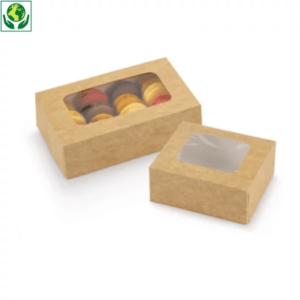 |
Perfect for displaying your baked goods, our natural kraft cardboard pastry boxes feature a window to offer consumers a flattering visual. |
5. On what criteria should you choose your plastic food packaging?
Plastic food packaging must meet 4 major issues :
- ensuring food safety for consumers;
- preserving nutritional qualities;
- adapt to the delivery method;
- inform the consumer;
Thus, a food plastic packaging must, on the one hand, be chosen according to the type of foodstuff. Liquid, solid, or to be heated, your packaging must respond to the different issues, particularly to ensure the product is watertight. On the other hand, you must take into account the legislation in force: to do this, the best thing is to opt for recyclable, recycled, or biosourced packaging. It is imperative that it respects the rules of sanitary safety and does not represent any danger to health.
An equally important criterion is the delivery method used. The packaging must be able to withstand transport without becoming damaged or compromising the hermeticity of the product. Consumers have a need for transparency: your food packaging should instil confidence and offer sufficient information. Adopt, for example, eco-friendly packaging. This sends a strong signal to your company, highlighting your environmental and health concerns.
Help regulate waste by opting for eco-friendly plastic food packaging. To go further in your thinking, discover the different stages of plastic recycling or alternatives to implement to limit the use of plastic.












